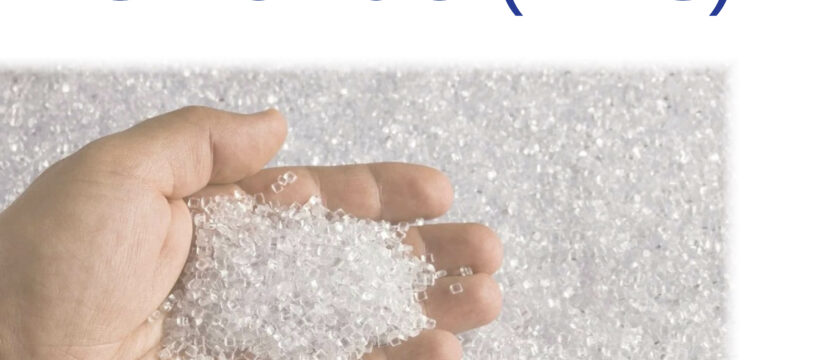Indestructible, versatile and cost-effective: polyvinyl chloride (PVC) is one of the oldest and most common plastics. Bans on PVC are being discussed for health and environmental reasons. Yet the material is gaining in attractiveness again nowadays as it is produced from byproducts of the chemical industry and common table salt, and not just from crude oil. So far, at least, its success has been unbroken: PVC is the best-selling thermoplastic alongside polyethylene and polypropylene. The latest Ceresana market study on polyvinyl chloride, which is already the seventh edition, expects PVC demand to continue to grow and reach around 57.7 million tonnes worldwide in 2031.
Is PVC becoming environmentally friendly?
Flexible PVC which contains large quantities of plasticizers is particularly controversial because toxic chemicals and heavy metals can be released during production, use and disposal. There is however progress in the recycling of PVC: In Europe, more than 810,000 tonnes, or more than a quarter of all PVC waste, is already recycled each year. This means that the recycling rate for PVC is better than for other plastics. In response to the European Union’s Chemicals Strategy and Circular Economy Action Plan, PVC, plasticizer and stabilizer manufacturers and converters in the EU, Norway, Switzerland and the UK have made a voluntary commitment: the „VinylPlus“ initiative is designed to improve recycling and generally the environmental performance of PVC. With biobased PVC grades and biobased additives made from renewable raw materials, PVC suppliers want to profit from the boom in bioplastics.
Construction industry as main customer
With a share of around 60%, the construction industry is the most important customer sector for PVC and is expected to remain so in the future. In the construction sector, PVC is used for a wide range of applications, from flooring to roofing panels, from window frames and doors to cables and cable sheathing, anchors and fasteners. The most important PVC products are pipes and piping, which account for over 37% of total PVC demand. They are followed by profiles with 20.1%, films and sheets with 18.1%. In 2021, over 7.3 million tonnes of PVC were processed into wastewater pipes worldwide; the market for PVC pipes for drinking water and for industrial applications is somewhat smaller. Compared to concrete or metal, PVC pipes are much lighter, and PVC also scores with corrosion resistance and insensitivity to UV rays, chlorine and ozone.
Packaging of all kind
The packaging industry comes in second place, processing 16% of the PVC produced worldwide into flexible and rigid packaging: PVC is used to make packaging films, bags and sacks, as well as shrink and stretch films, but also containers such as butter or yogurt pots, bottles, boxes and lids. In general, PVC is used for many everyday products, such as credit cards, shoe soles, toilet seats and truck tarpaulins. Its electrical properties make PVC suitable for insulating tapes and protective coatings for pliers or other tools. In medical technology, PVC’s high resistance to chemicals and disinfectants is an advantage, for example, in infusion bags, tubes, catheters and gloves.
Current market data on rigid PVC and flexible PVC
Chapter 1 provides a presentation and analysis of the global market for polyvinyl chloride – including forecasts up to 2031: PVC demand and revenue are explained for each region of the world. In addition, global and regional demand per product and per application area is analyzed. The following PVC products are considered in detail: Pipes for wastewater, Pipes for drinking water, Pipes for other applications, Profiles, Films and sheets, Cables, Flooring, Containers and other PVC products. These PVC application areas are examined: Flexible packaging, Rigid packaging, Construction, Transportation, Electrical and electronics, Industrial and other applications. Chapter 2 examines 46 countries individually: Demand, Revenues, Production, Trade, Demand per PVC product, Demand per application, Demand per rigid or flexible PVC type. Chapter 3 provides company profiles of the most important PVC producers, clearly arranged by contact details, revenue, profit, product range, production facilities, capacities and brief profile. Detailed profiles are provided by 82 manufacturers, e.g. China National Chemical Corporation, Formosa Plastics Group, Ineos Holdings Ltd., Occidental Petroleum Corporation, Orbia Advance Corporation, Shin-Etsu Chemical Co., Ltd., Westlake Chemical Corporation, and Xinjiang Tianye Co., Ltd. Further information on the new market study Polyvinyl Chloride (PVC): https://ceresana.com/en/produkt/polyvinyl-chloride-market-report
About Ceresana
As one of the world’s leading market research institutes, Ceresana specializes in the chemicals, plastics, packaging, and industrial goods sectors. Special focus areas are bio-economy and automotive / mobility. Since 2002, companies have benefited from high-quality industry analyses and forecasts. Over 200 market studies provide more than 10,000 clients around the world with the knowledge base for sustainable success. More about Ceresana at www.ceresana.com
Ceresana
Mainaustrasse 34
78464 Konstanz
Germany
Press Contact: Martin Ebner, m.ebner@ceresana.com

